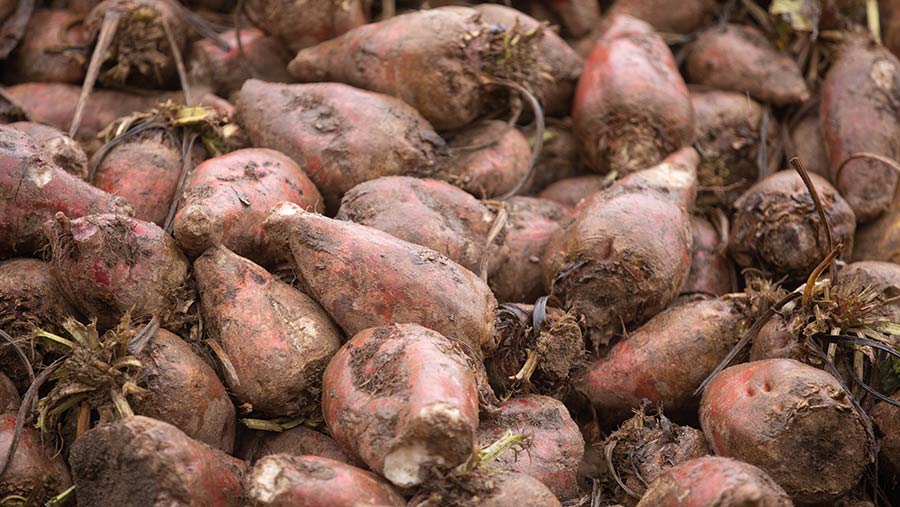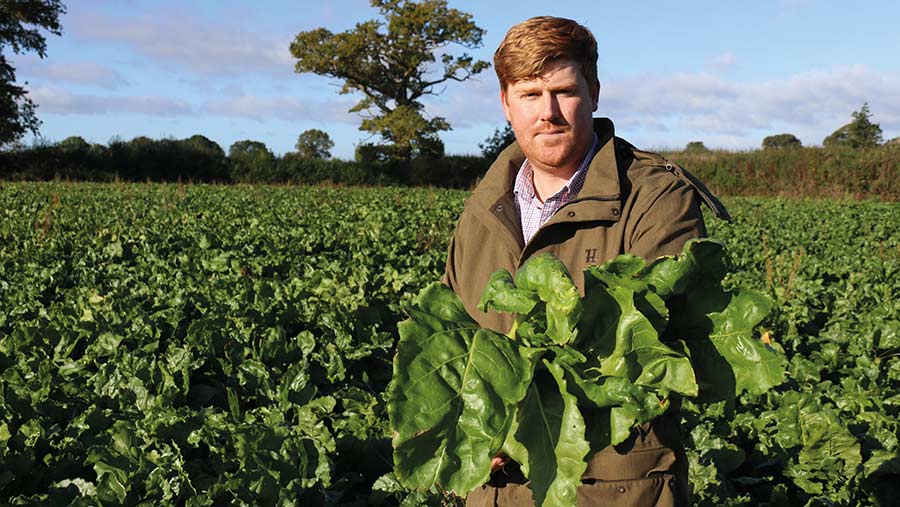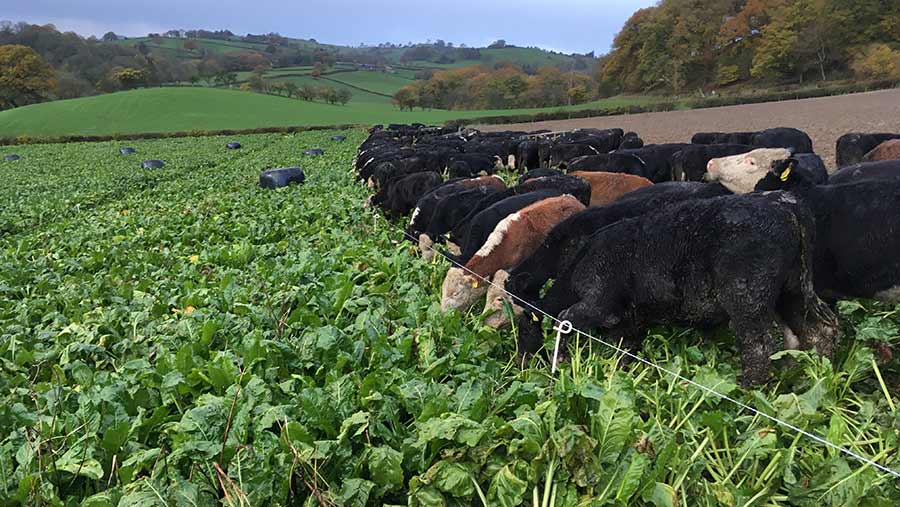How to grow better fodder beet – 5 expert tips
 © Tim Scrivener
© Tim Scrivener Fodder beet is a high-energy forage crop, consistently providing metabolisable energy (ME) of 12 MJ/kg dry matter (DM), improved livestock performance and outyielding alternative options.
What’s more, it offers farmers flexibility with the option to lift and store the crop or feed it in-situ.
See also: Fodder beet feeding advice for ewes and lambs
However, to maximise its potential, careful management is needed – particularly when fertiliser prices are high, and the loss of key crop protection products is making growing the crop more challenging.
ProCam agronomist Rhys Owen warns that it is not a crop on which to cut corners. Below, he sets out his five top tips for growing better fodder beet.

Rhys Owen © Agribusiness Communications
1. Choice of variety
The first factors to consider are the class of livestock you will be feeding fodder beet to and how you are going to be feeding it – will it be grazed in the field, or will you be lifting it?
If it is going to be grazed, it is important to select a variety with a lower-medium DM – ranging from 14-16%.
More of the root growth of these varieties sits above the soil. This enables a higher utilisable yield and good grazing intakes.
For sheep grazing, a variety such as Lactimo has a lower DM (13%), making it slightly more palatable and easier for sheep to eat.
For cattle grazing, Geronimo has a slightly higher DM (14-16%) and is 15% higher yielding than Lactimo. But it also sits in the ground higher, which aids intake.
2. Soil type
If you are planning to graze fodder beet in the field, medium to light free-draining soils are essential – particularly when outwintering stock.
It is important to consider environmental factors, such as sloping fields or nearby watercourses. Preventing soil run-off should be a priority.
Fodder beet likes a good depth of soil for its roots to fully explore down into the soil profile.
Growers should aim for a soil pH of 6.5 and above. Phosphate, potash and magnesium levels are also important, with index targets of 2, 2- and 3, respectively.
Heavier soils are more suited to early lifting of fodder beet. Grazing is not recommended in this case.
3. Optimal establishment
Conditions and soil temperature at drilling are the most important markers for optimal establishment. As a target, soil should be 7C and rising over a period of seven to 10 days ahead of drilling.
Prior to this, a very fine, loose seedbed should be prepared to enable maximum rooting. Aim for a 3mm aggregate size in the top 30-50mm, with a more open structure beneath.
Primed fodder beet seed (seed that has been pre-germinated, dried and pelleted) enables faster germination which can be useful with the unpredictable weather conditions in the UK.
In ProCam trials over the past few seasons, using primed seed has equated to an additional 1-2t DM/ha (0.4-0.8t/acre) of yield benefit.

© Marc Jones
4. Fertiliser strategy
Traditionally, the strategy for fodder beet has mimicked that of sugar beet. In sugar beet, the end market does not want excess nitrogen in the roots, meaning typical application rates sit around 120kg N/ha (49kg/acre).
However, over recent seasons, ProCam in-field experience has shown that fodder beet is very responsive to additional nutrients, particularly nitrogen.
The results have shown that a total nitrogen rate (including synthetic and organic sources such as manure) of 180-240kg N/ha (73-97kg/acre) is optimal for raising average yields and leaf protein levels.
Historically, average yields in the UK have sat at around 18t DM/ha (7t/acre). Using the higher N rate, this rose to 24-32t DM/ha (10-13t/acre).
Other nutrients including boron and sodium can be equally important, with sodium particularly beneficial when used alongside potash – something which may be even more important given the high potash prices this year.
Adequate levels of both potash and sodium in the soil can often result in higher yields, so it is worth factoring their inclusion into the crop nutrient plan.
Late foliar nitrogen might also be a good option this season. Foliar feeding of any plant has a higher utilisation and use efficiency by the crop.
5. Control of weeds, disease and pests
Fodder beet is very sensitive to weed challenge and is very uncompetitive in its early stages. This has been made worse by the loss of the herbicide desmedipham.
This has changed the thinking behind weed control. Growers should now be looking at taking the pressure off post-emergence herbicides.
To do this, using a pre-emergence herbicide is advisable to remove the initial flush of weeds and sensitise any subsequent flushes.
Control of virus yellows is exacerbated by the loss of neonicotinoids.
There is only one aphicide available at present, flonicamid, but this can only be used once so careful monitoring and deployment is necessary.
Think about what other crops are in the rotation. It is vital to reduce the carry-over of potentially infected aphids into the new crop by minimising the “green bridge” effect.
Management considerations also should be given to beet cyst nematodes. Beet should be included in the rotation no more than one in six years.
Good disease control starts with varietal choice and minimising any nutritional stress. Fungicides should then be used at the onset of any disease.
Control should be focused on protecting the green leaf area to maximise crop yields.
